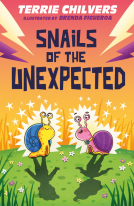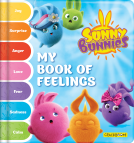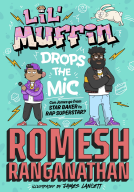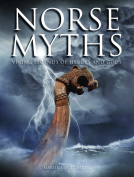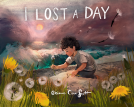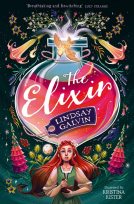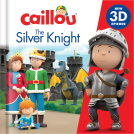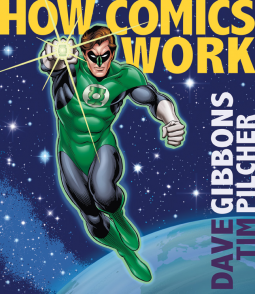
How Comics Work
by Dave Gibbons; Tim Pilcher
This title was previously available on NetGalley and is now archived.
Send NetGalley books directly to your Kindle or Kindle app
1
To read on a Kindle or Kindle app, please add kindle@netgalley.com as an approved email address to receive files in your Amazon account. Click here for step-by-step instructions.
2
Also find your Kindle email address within your Amazon account, and enter it here.
Pub Date 2 Oct 2017 | Archive Date 7 Nov 2017
Quarto Publishing Group – Wellfleet Press | Wellfleet Press
Description
In Eisner Award–nominated How Comics Work, Dave Gibbons offers a class in creating comic books. Learn scriptwriting, page layouts, lettering, and more from the incredible artist behind Watchmen!
This “How It's Done” series reveals insider hints, tips, and tricks from one of the world’s greatest comic creators, all in his own words. The artist behind juggernauts like Watchmen and The Green Lantern, Dave Gibbons is here to teach you scriptwriting, page layouts, lettering, cover designs, and more, with scans of original artwork and rarely seen workings to illustrate his personal creative processes.
How Comics Work covers both Gibbons' hand-drawn and digital design techniques in depth. An early adopter of computer design in comic creation, all his lettering is digital, and he even has his own “hand-lettered” font. This is your chance to gain insight to Gibbons' digital work, from his computer coloring and 3-D modelling with Angus McKie on Give Me Liberty, to his work on The Originals using digital grey tones. You’ll learn how he layers text for editing, creates effects such as flares and neon glows, and prepares artwork for print and online.
How Comics Work is everything you need to know to get started creating great comic books.
Available Editions
| EDITION | Other Format |
| ISBN | 9781577151579 |
| PRICE | US$24.99 (USD) |
| PAGES | 192 |
Featured Reviews
 John L, Reviewer
John L, Reviewer
A little too design-based for my tastes, but this highly pictorial guide to Dave Gibbons' thoughts on his craft ranges successfully through everything - from lettering and logos to thinking of spine art, page composition and digital colouring. You name it, he's done it - it's just a shame the writing sections are so brief. Also, the samples in the captioned art (and the captions and art themselves) are a little scattershot, so you might not get a complete picture when you want.
 Jim M, Reviewer
Jim M, Reviewer
I love to create.
And I love books that make me want to create.
I was worried this might be a re-tread of other books, like Understanding Comics. But this book stands by itself.
It’s a study of the creative process in comics from the point of view of one comic creator. but it has enough info to be of interest to any comic fan or would-be creator.
Of course, the writing portion interested me the most, but it was good to get an overview of the whole process. A lot of things were completely new to me, though I’ve been reading comics all my life. From character structure, lighting, designing pages and panels, color theory, and all the <i>different types</i> of lettering - there’s a lot more that goes into this than I realize - even though I’ve thought about it a lot.
Plus a few pages of exercises at the back can make you put some of this into practice if you’re looking to be a comics creator.
The cool thing about this, I think, is that it can make a comic reader’s experience that much richer. And give us an appreciation for the work put into a comic. I think I’ll probably buy this book - a good add to any comic artist’s - and fan’s - shelf.
<i>Thanks to NetGalley and Wellfleet Press for a copy in return for an honest review.</i>
 Ed F, Media/Journalist
Ed F, Media/Journalist
Dave Gibbons is a living legend of the comic books world. He’s drawn pretty much everything that matters in the world of sequential art and his credits include Watchmen, Kingsman, 2000AD, Batman, Give Me Liberty and many, many more. What Gibbons doesn’t know about comics isn’t worth knowing and it’s safe to say that any advice the master can pass on should be seen as invaluable.
His book, How Comics Work, is an interesting and highly accessible overview into one of the world’s most powerful forms of media. It’s lushly presented; Gibbons has opened his many sketchbooks and folders to fill the pages with useful information. Drawings, tips and anecdote sprawl across each page and the whole thing is laid out in an eye-catching and easy to understand way.
Gibbons begins with the basics of storytelling and moves on to the various complexities of comic books. Sometimes these are simple pieces of advice, but often they are short anecdotes pulled from his substantial experience. Gibbons has worked with many of the best in the field and the information in these pages is invaluable. We learn much about the author’s heroes and creative influences, and gain a greater respect for the creator’s art.
This is not a definitive or comprehensive book; it aims to give a substantial overview of the methods used by someone at the height of a stellar career. It doesn’t walk you through how to draw or how to write a script. Instead it shows you how to use those skills effectively. It takes you through both simple and digital production techniques, talks about logo design, issues advice on lettering (and highlight master letterers) and so on. It does the same for pencils, inking, etc. Gibbons has produced a crucial work here; one that talks about process. It is essentially an easy to decipher ‘Master’s notebook’ and a worthy addition to any comic creator’s reference library.
It’s also filled with beautiful art and those of us who simply love comics will get a kick out of turning the page and learning how various iconic graphic novels were constructed. This is vital for fans of comics - both casual and professional.
HOW COMICS WORK / AUTHORS: DAVE GIBBONS & TIM PILCHER / PUBLISHER: ROTOVISION / RELEASE DATE: OUT NOW
Readers who liked this book also liked:
Sara T. Behrman
Children's Fiction, Outdoors & Nature, Parenting & Families

